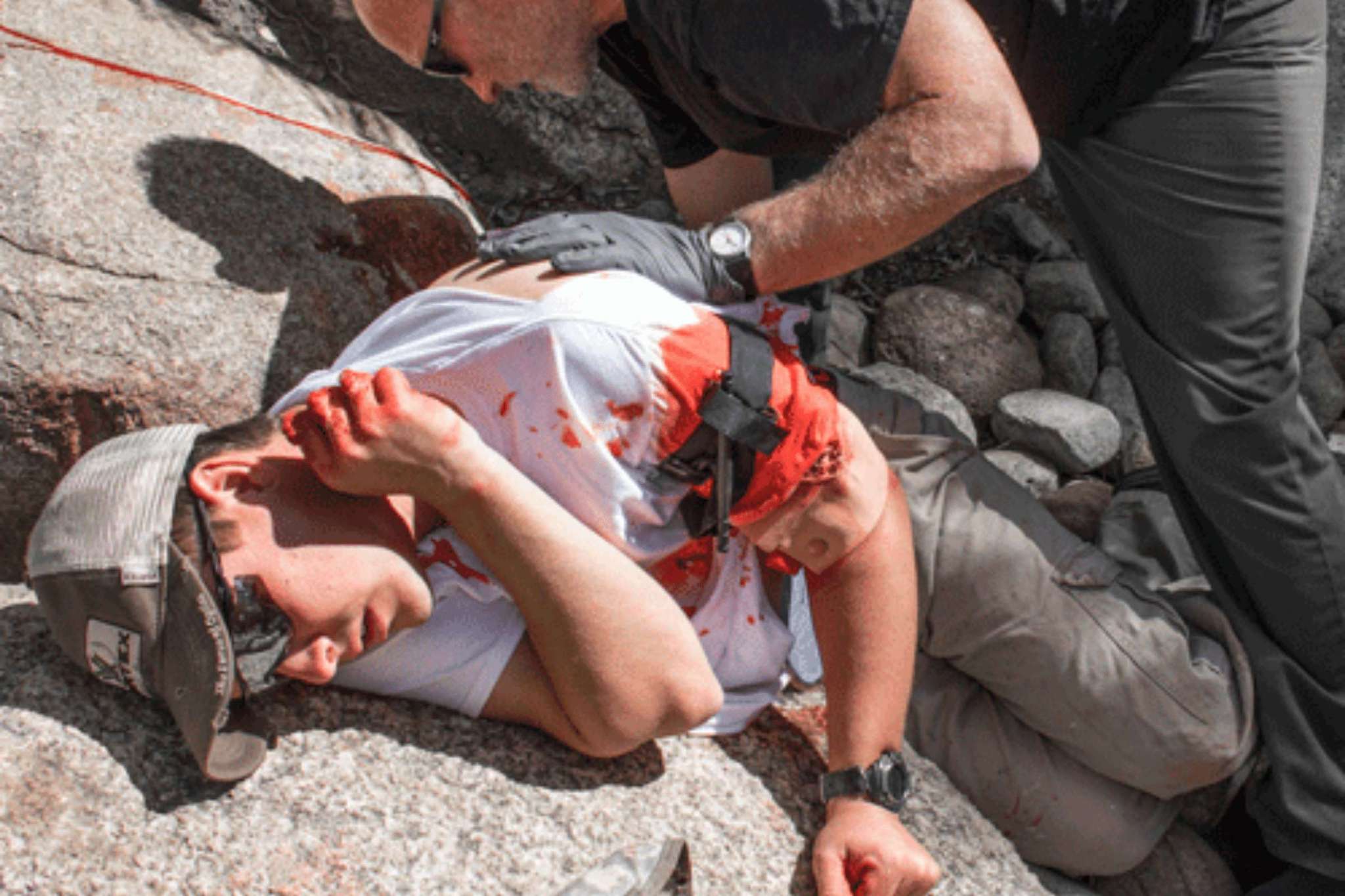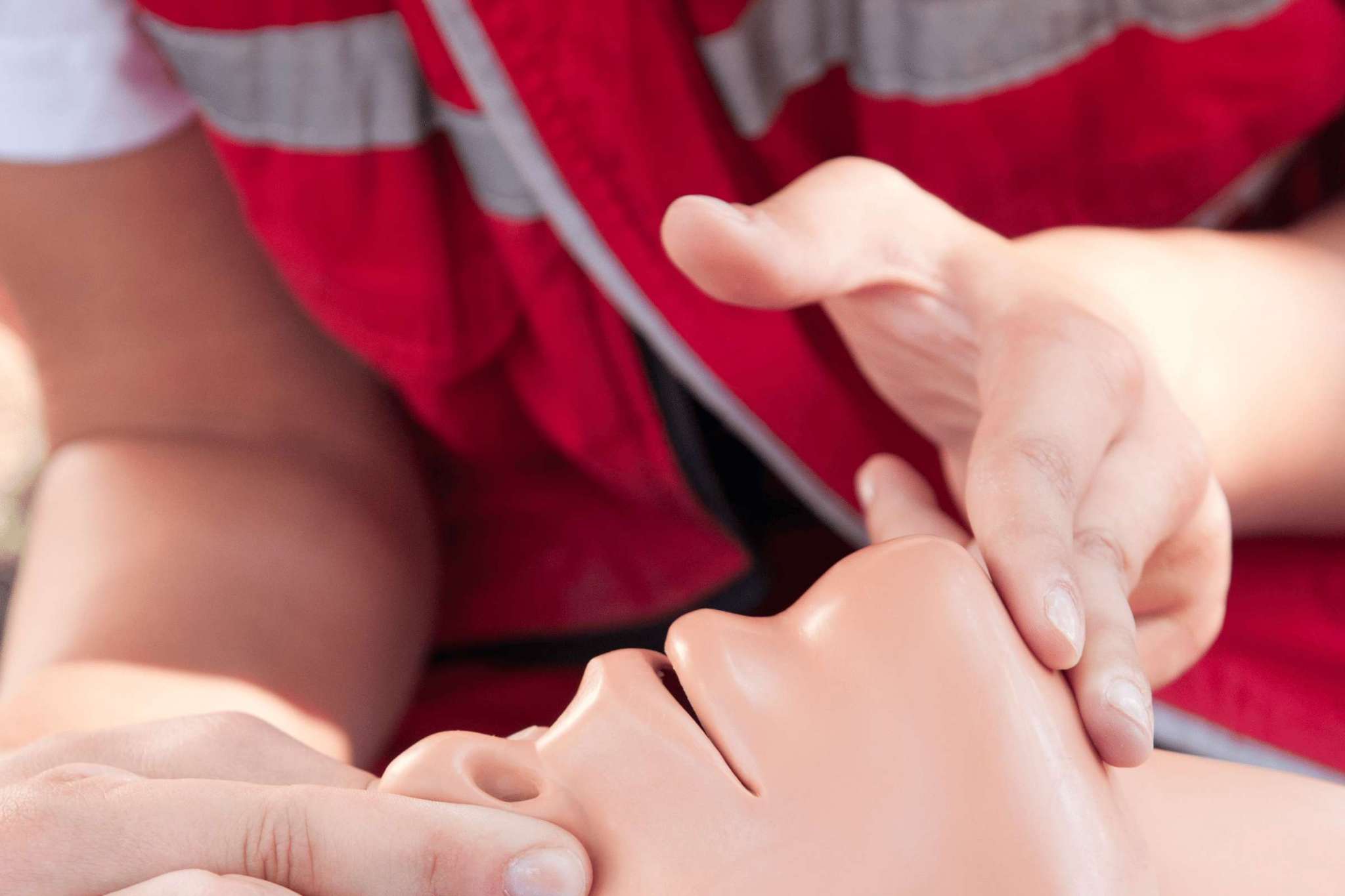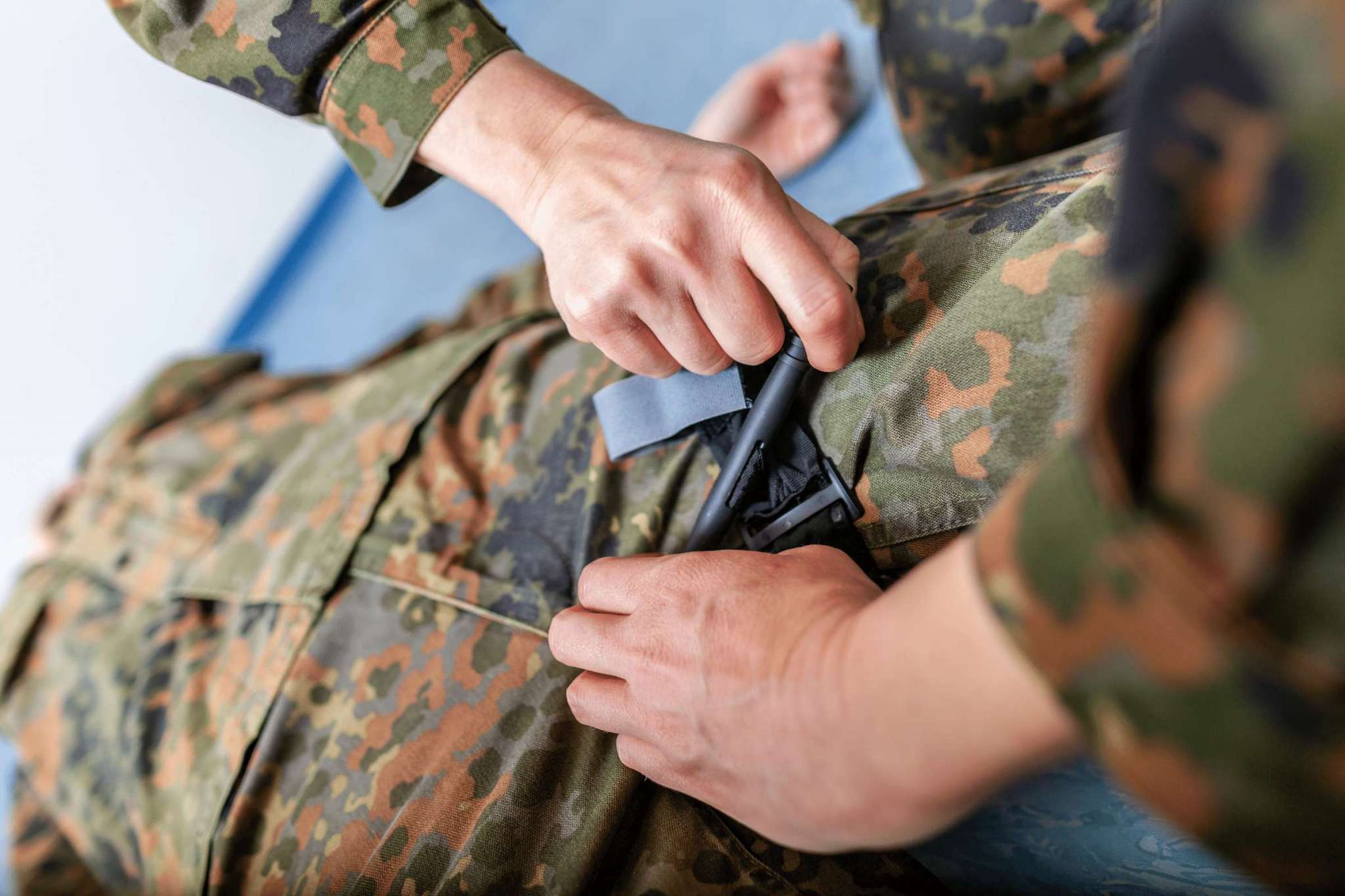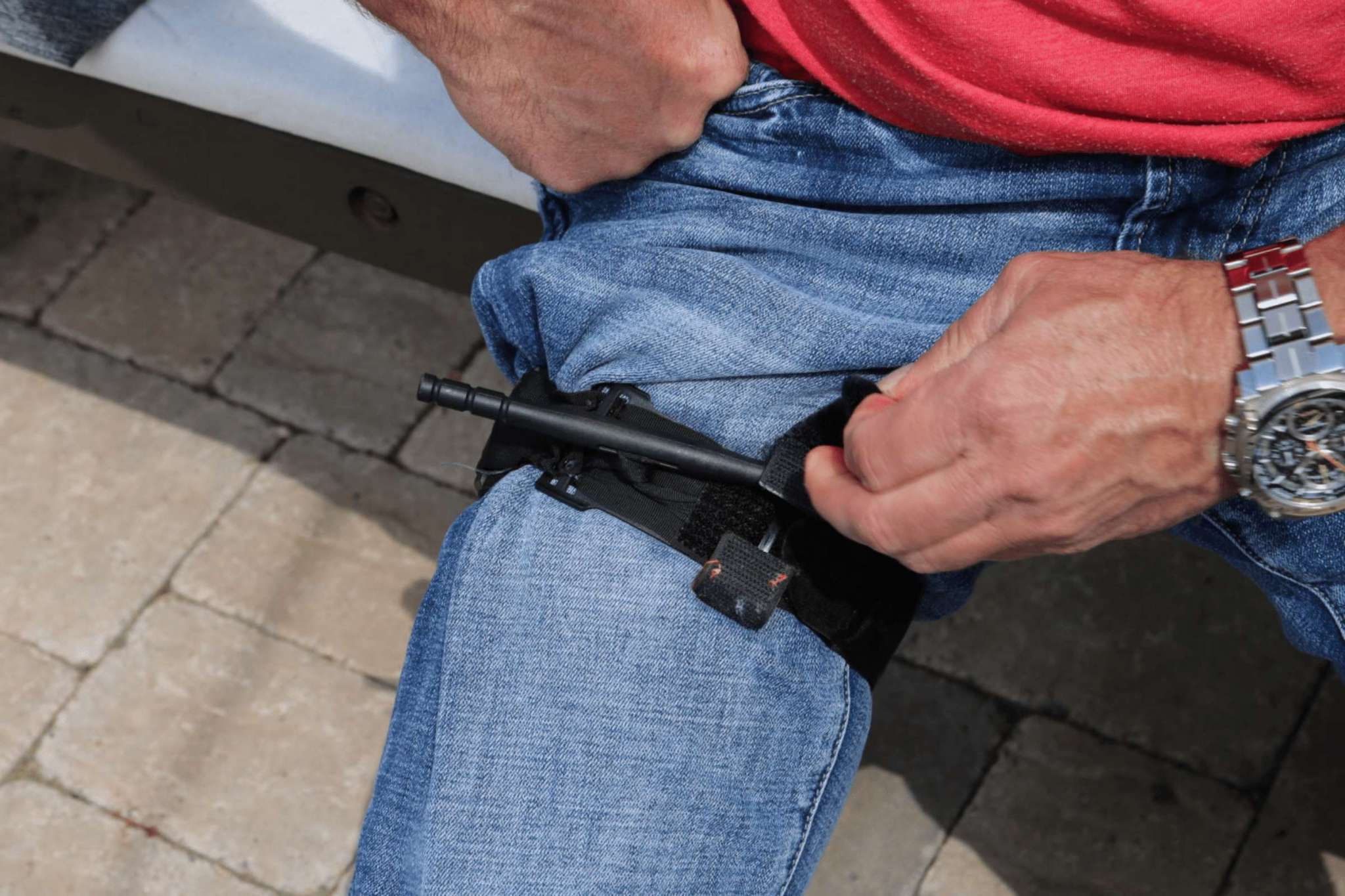MAKE UP AND SPECIAL FX
Anyone who has ever gone to a bad horror movie can attest to the fact that Hollywood makes the magic. From the finite details in special FX to the exact timing of emotion in acting, if a movie lacks the fine details it will be an absolute failure. Scenario based training draws the same emotions much like the movie industry, especially as it relates to emergency medical training.
As the old saying goes, “the devil’s in the details.”
The devil causes chaos and mayhem and like Murphy’s first law of combat, “anything that can go wrong, will go wrong.” So, when we set out to realize the special FX of medical training it was as such that we realized we can no longer create training scars with poor FX, much the same way we must avoid training scars in any craft we seek to perfect.
The goals of sound scenario-based training are
- Safety
- Efficiency
- Realism
- Focus on the task being taught and tested
- Focus and emphasis throughout the testing on the desired outcome as it relates to the objectives.
MARINES IN TACTICAL MEDICINE
One of my collateral duties was to train Marines in Tactical Medicine. This would include the use of moulage, or fake wounds. However, due to the budgetary constraints of the Marine Corps we were limited in extra clothing and fake blood for teaching how to identify wounds by identifying bleeding and cutting clothes off to expose injuries.
As a result when shit hit the fan a lot of providers failed to respond appropriately due to the training scars of not learning to properly identify wounds and their nature.
WHEN MOULAGE WOUNDS ARE USED CORRECTLY, AND ACTORS ARE TRAINED, THEY SEND CHILLS UP YOUR SPINE.
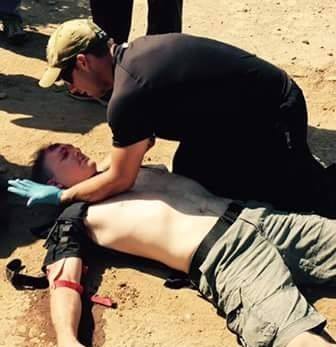
As I watch students struggle with the screaming patient and their wounds it is nearly impossible for me not to want to jump in and help! In one particular scenario we prepped a daughter of one of the students as a double amputee screaming in fear and pain.
We saw just how big a killer stress can be when mom stopped dead in her tracks as her daughter passed out from shock. When we see something terrible happen to our loved ones it can sweep the rug right out from under our feet.
Failing to act can mean the loss of a loved one.
Hyper-realism makes scenario based training what it is and without it we are failing to prepare those who need it the most!
Training scars are hard to get rid of, but modern military practices across the uniformed services have upped their game and as we as a nation continue to face more and more adversity, we as communities must also up our game. It is time to get real.
EACH NEW CASUALTY FOR EACH SCENARIO.
From the angle and direction of the bullet fired to the specific angles of a slash wound, we use a fresh set of clothing on each new casualty for each scenario.
This prevents confusion in making appropriate diagnoses. It is detrimental for a student to find wounds from a previous scenario as it may lead to confusion and so we require each student to come to class bringing three extra sets of older and worn out clothes for the scenario day because they are going to get cut, bloodied, and destroyed as their fellow students seek out potential injuries and work to treat them.
The camaraderie grows with each passing scenario as students and observers begin to emphasize with their roleplaying patients and their maladies.
WE USE GALLONS OF FAKE BLOOD
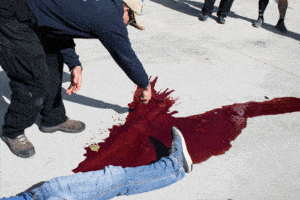
Scenario day is a long hard day full of lessons learned in blood….fake blood. It is better to make mistakes in training than en situ.
We use about five gallons of blood for each scenario day. The goal of which is to reinforce the requirement for universal precautions against bloodborne agents through Body Substance Isolation, and also to aid in triage.
The human body contains approximately five gallons of blood and once the casualty loses approximately 2 liters of blood the immediate need for definitive and aggressive treatment would cause this unconscious, nearly pulseless casualty to be moved on from as an expectant casualty.
Knowing what that amount of blood looks like is critical.
MECHANISMS OF INJURY
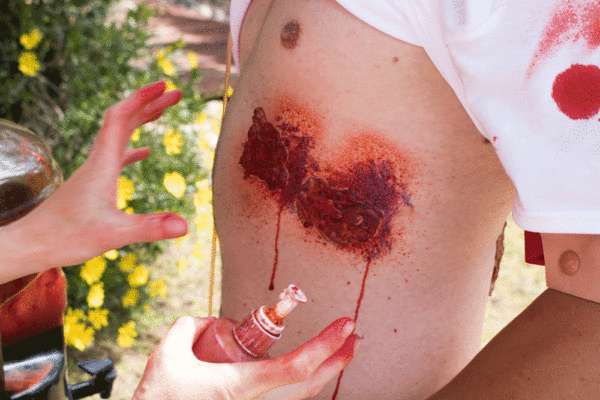
Attention to the mechanism of injury, the ability to repeat perfect wounds and wound patterns according to that mechanism of injury, and the acting of the individual as it corresponds to the specific signs and symptoms exhibited for the injury sustained is paramount to achieving a hyper realistic effect.
HIGH PACE TRAINING
The make-up and training goes fast and is non-stop for our staff as we work to serve up the most realistic in Pre-Hospital Care for the everyday responder.

